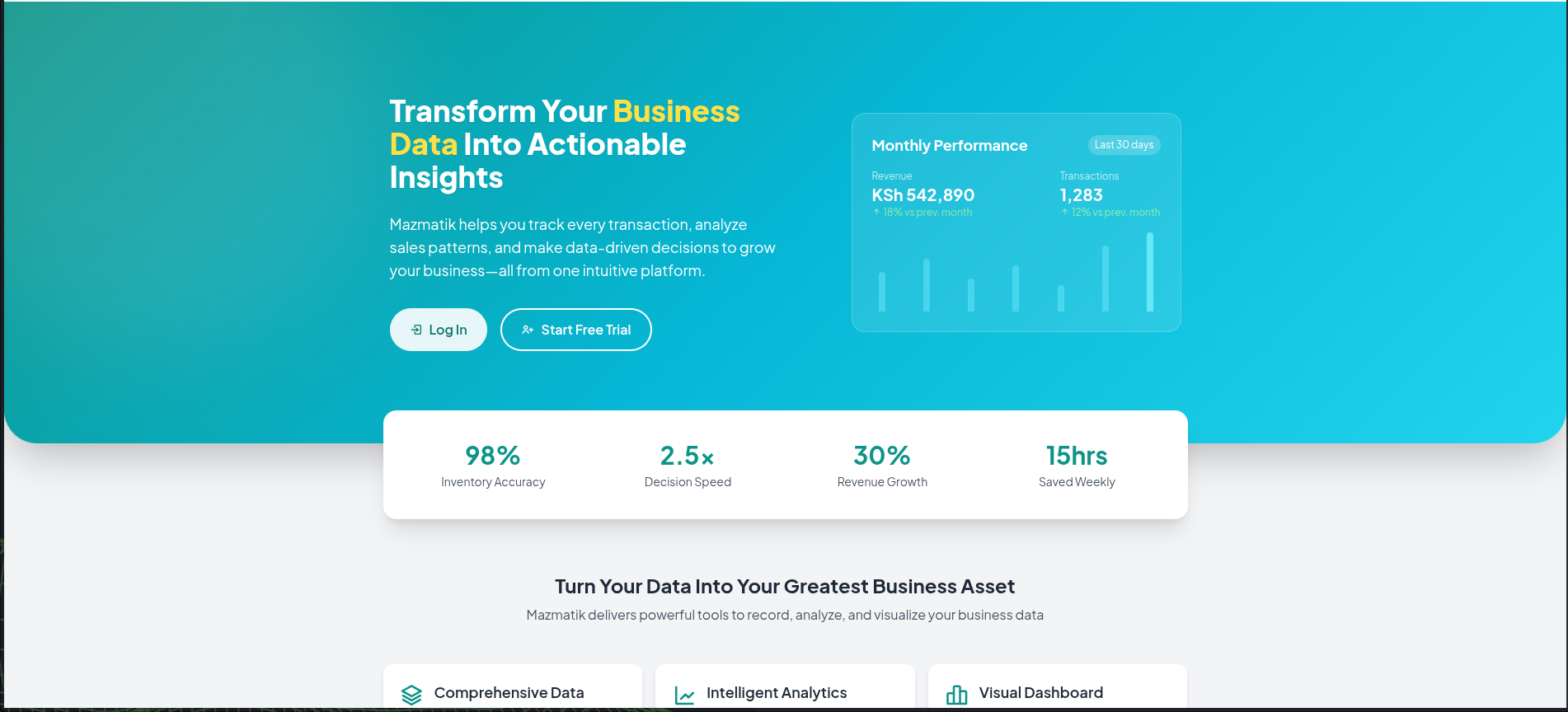Mazmatik POS
Published
May 18, 2025
Author
Lewis
Reading Time
2 minute read
1. Defining the Vision and Requirements
How can small and medium‑sized enterprises harness their raw transaction data to drive smarter decisions? I sketched out core requirements; capture every sale, payment method and inventory change; automate trend analysis; deliver real‑time visualization; and surface alerts for restocking and team performance. These pillars guided the architecture, ensuring the final product would be both comprehensive and easy for non‑technical users to adopt.
2. Selecting the Technology Stack
To meet our goals, I chose PHP 8.x with Laravel for the backend, leveraging its MVC structure and Eloquent ORM for rapid development and clear separation of concerns. Authentication and user scaffolding came via Laravel Breeze, while Spatie’s Permission and Activitylog packages provided robust role‑based access control and auditing out of the box. On the frontend, Blade templates combined with Tailwind CSS and Alpine.js delivered a responsive, interactive dashboard without heavy dependencies.
3. Designing Data Models and Pipelines
Central to Mazmatik is the transaction model; each sale record stores SKUs, quantities, payment type, customer metadata and geolocation. I defined migrations and Eloquent relationships for Products, Transactions, Customers and InventorySnapshots. A nightly job snapshots inventory levels using Laravel Horizon, while Redis caching accelerates frequent queries for the dashboard. Data integrity is enforced with database transactions, ensuring that even high‑volume imports never leave the system in an inconsistent state.
4. Crafting the Dashboard Components
The user interface splits into modular components: a real‑time metrics header, trend‑analysis charts, inventory widgets and team‑performance tables. Chart.js and Livewire power dynamic charts that update via WebSockets when new data arrives. Blade components (cards, tables, modals) ensure consistent styling and behavior across the app. By combining server‑side rendering with selective JavaScript enhancements, we achieved sub‑200 ms page loads while retaining a highly interactive feel.
5. Optimizing Performance and Planning Next Steps
To handle growing datasets, I implemented eager loading, query indexing and Redis caching for hotspot endpoints. GitHub Actions automate test runs on pull requests, and deployments to ShujaaHost use zero‑downtime migrations via Laravel’s atomic deployment strategy. Looking ahead, we plan to integrate AI‑driven forecasting models, add CSV/Excel data imports and explore a Flutter mobile companion app for on‑the‑go reporting. Continuous user feedback will refine the UX and ensure Mazmatik remains the go‑to analytics tool for SMEs.
Image Gallery

Enjoyed this article?
Share it or download for offline reading
Want to Learn More?
Explore more tech insights or discuss your project needs